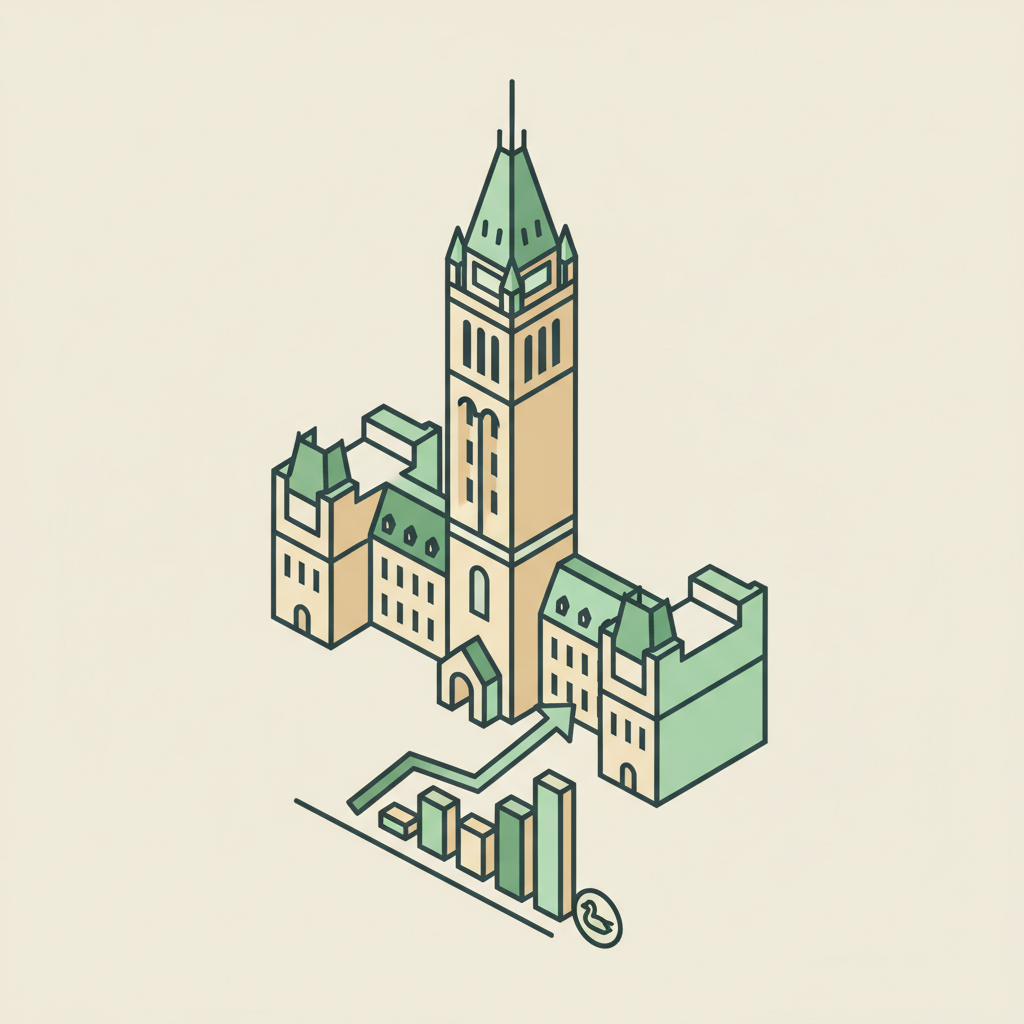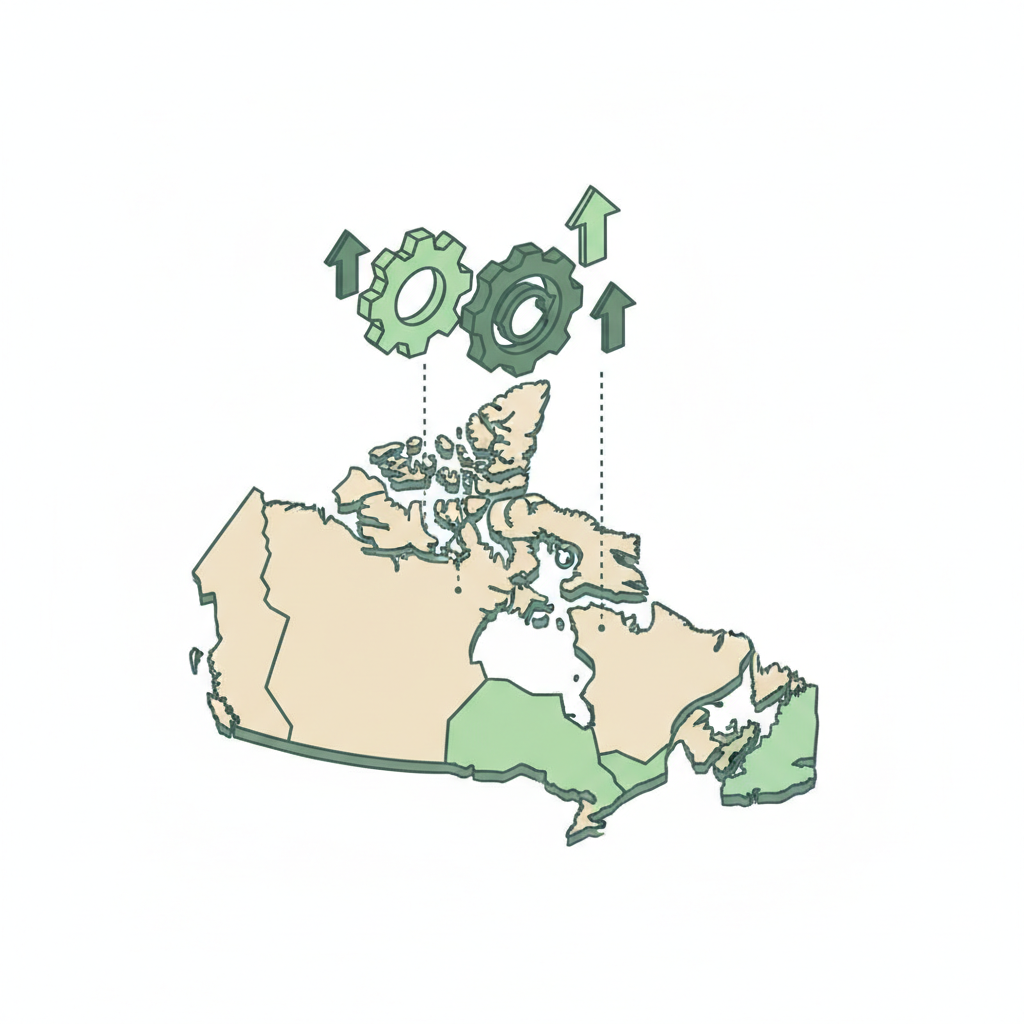As Saint John, New Brunswick, continues to grow and evolve, understanding the broader economic landscape is crucial for local businesses and residents alike. The latest insights from the Bank of Canada’s recent reports shed light on national trends that are undoubtedly shaping our local economy, from consumer spending habits to business investment strategies. With the Bank of Canada maintaining its target for the overnight rate at 2.75%, and ongoing global trade tensions, the economic climate presents both challenges and opportunities for our community.
The Bank of Canada recently announced its October 2025 Monetary Policy Report press conference, featuring Governor Tiff Macklem and Senior Deputy Governor Carolyn Rogers, highlighting the central bank’s ongoing commitment to transparency regarding Canada’s economic direction.

Bank of Canada Governor Tiff Macklem and Senior Deputy Governor Carolyn Rogers.
Consumer Confidence and Spending: A Cautious Recovery
The Canadian Survey of Consumer Expectations for the third quarter of 2025 reveals a mixed but cautiously optimistic picture. While the overall consumer sentiment indicator saw a modest rise from its recent lows, it still lags behind pre-trade conflict levels. This suggests that while Canadians are feeling slightly less pessimistic about their financial health compared to a year ago, a sense of uncertainty persists.
Spending intentions have shown some improvement, particularly among homeowners and older demographics, partly attributed to factors like lower gas prices. However, discretionary spending on items such as furniture, appliances, restaurant meals, and vacations remains subdued. High prices, general economic uncertainty, and elevated housing costs continue to be significant barriers for many households.
A notable trend is the increased prioritization of Canadian-made goods and domestic vacations. This ‘Buy Canadian’ sentiment could offer a boost to local Saint John businesses, though consumers remain price-sensitive, with most unwilling to pay more than an additional 10% for Canadian products.
Business Sentiment and Investment: Navigating Uncertainty
For Saint John businesses, the third-quarter 2025 Business Outlook Survey indicates a gradual recovery in sentiment from the lows experienced earlier in the year, yet overall outlooks remain subdued. A concerning finding is the increase in firms planning for a recession, rising from 28% to 33%.
Weak demand continues to be a primary concern, with subdued sales outlooks attributed to the broader impacts of trade tensions. This includes reduced spending from business customers on services and capital goods, as well as lower consumer spending and a weak housing sector outlook. Export-oriented businesses, particularly those in sectors like steel and aluminum, are facing muted sales expectations and even layoffs due to ongoing US tariffs and global demand softness.
Investment plans are largely on hold, with many businesses prioritizing routine maintenance over capacity expansion. This cautious approach is a direct reflection of soft demand and the lingering uncertainty surrounding trade policies.
Labour Market Dynamics: Shifting Sands
The labour market in Canada is experiencing a downturn in consumer confidence. The labour market index fell in the third quarter of 2025, with consumers reporting a lower likelihood of voluntarily leaving or finding a new job. This trend is particularly pronounced among public sector workers, potentially influenced by federal government expenditure reviews. Concerns about job security are also heightened in trade-dependent sectors, which is especially relevant for a port city like Saint John.
From the business perspective, hiring intentions are subdued, with most firms not planning to expand their workforce. This is largely due to soft demand, ongoing tariff uncertainty, and minimal capacity pressures. Wage growth expectations are also trending lower, nearing pre-pandemic levels as cost-of-living adjustments ease and demand weakens.
Inflation and Trade Tensions: A Persistent Challenge
Inflation remains a key factor impacting both consumers and businesses. While inflation is close to the Bank of Canada’s 2% target, underlying price pressures have picked up to about 2.5%. Short-term inflation expectations remain above pre-pandemic averages, and tariffs are widely seen as a significant driver of these pressures, particularly for motor vehicle prices.
Businesses continue to face cost pressures, with expectations for input price increases. However, weak demand is limiting their ability to pass these costs on to consumers through higher selling prices. This creates a challenging environment where businesses absorb higher costs while consumers grapple with elevated prices.
Looking Ahead for Saint John
The national economic trends outlined in the Bank of Canada’s reports provide a vital context for Saint John’s business community. While trade tensions and economic uncertainty present headwinds, the resilience of Canadian economic activity and the growing ‘Buy Canadian’ sentiment offer potential avenues for local growth. Businesses that can adapt to evolving consumer preferences, manage cost pressures effectively, and navigate the complexities of the current trade environment will be best positioned for success in the coming months. For more detailed information, you can refer to the Business Outlook Survey—Third Quarter of 2025.
Frequently Asked Questions
What is the current Bank of Canada interest rate?
The Bank of Canada has maintained its target for the overnight rate at 2.75%, with the Bank Rate at 3% and the deposit rate at 2.70%.
How are trade tensions affecting Canadian consumers?
Trade tensions are weighing on consumers’ spending plans and perceptions of financial health. Many consumers are prioritizing Canadian-made goods and domestic vacations, and a significant portion expects tariffs to generate inflationary pressures, particularly for motor vehicle prices.
What are the main concerns for Canadian businesses?
Businesses are primarily concerned about uncertainty surrounding financial, economic, and political conditions, slowing demand, cost pressures (including tariffs), and taxes and regulations.
Is the Canadian labour market strong?
The labour market index has fallen, with consumers reporting a lower likelihood of finding or leaving a job. Hiring intentions among businesses are subdued, and wage growth expectations are trending lower.
What is the outlook for inflation?
Short-term inflation expectations remain above pre-pandemic averages, and tariffs are seen as a major factor contributing to inflationary pressures. Businesses expect input prices to rise, but weak demand limits their ability to pass these costs on.




0 Comments